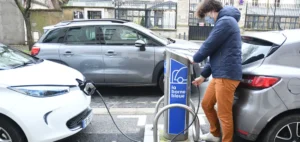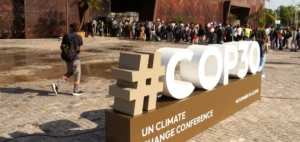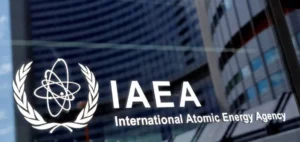The decision by the United States, under President Donald Trump, to withdraw once again from the Paris Agreement on climate change raises significant questions about the future of global energy markets. This withdrawal comes at a time when major powers are seeking to secure their positions in emerging technologies while managing the economic impacts of the energy transition.
With global climate commitments still ongoing, the absence of the United States could create imbalances in trade and investments tied to green energy. However, major players like China, the European Union, and India are ramping up efforts to fill the gap, relying on robust industrial and commercial strategies.
China’s Role in Driving the Energy Transition
China, the world’s largest emitter of greenhouse gases, stands as an essential player in energy markets. Despite challenges linked to its economic model, Beijing continues to pursue ambitious renewable energy targets. In 2024, China produced over 50% of the world’s electric vehicles, 70% of wind turbines, and 80% of solar panels. This industrial dominance has significantly reduced costs, making these technologies more accessible globally.
However, many countries’ reliance on Chinese exports raises concerns, especially in Europe. The trade conflict between Brussels and Beijing, exacerbated by the implementation of a European carbon tax, could disrupt supply chains and limit exchanges.
Europe: Between Climate Ambition and Economic Constraints
The European Union remains a central player in combating global warming. With a 7.5% reduction in emissions between 2022 and 2023, the EU demonstrates tangible results but faces growing challenges. The rise of political parties skeptical of green technologies, combined with budgetary tensions, threatens to undermine strategic investments.
Despite these difficulties, the EU aims to solidify international alliances, particularly with China and Canada, to strengthen climate multilateralism. This collaboration could serve as a lever to secure funding and infrastructure critical for the energy transition.
Emerging Markets at the Forefront
In emerging markets, the energy transition is becoming a means to attract investments and diversify economies. Brazil, the host of COP30 in the Amazon, demonstrates a desire for climate leadership while continuing oil exploration. India, meanwhile, is ramping up its renewable energy production, focusing on solar and wind power.
Other countries, like Colombia, are taking a radical approach by committing to end fossil fuel extraction, their primary source of revenue. Although economically risky, this decision aims to reposition the country in a changing energy market.
An Uncertain but Strategic Future
The United States’ withdrawal could reshape investment flows and priorities in energy markets. While China and Europe appear as potential leaders, geopolitical and economic tensions make the outlook uncertain. In this context, companies must not only adapt their strategies to national policies but also leverage opportunities offered by technological transitions to maintain their competitiveness.






















